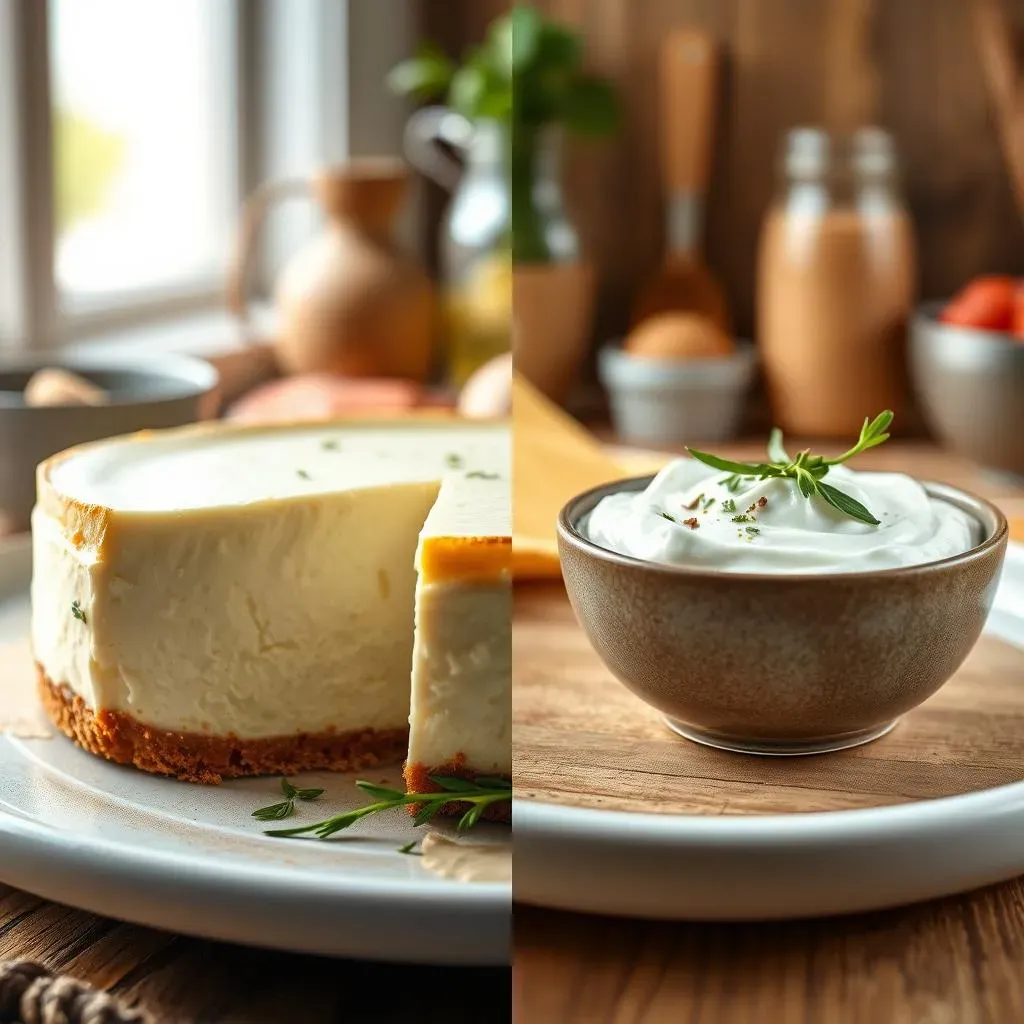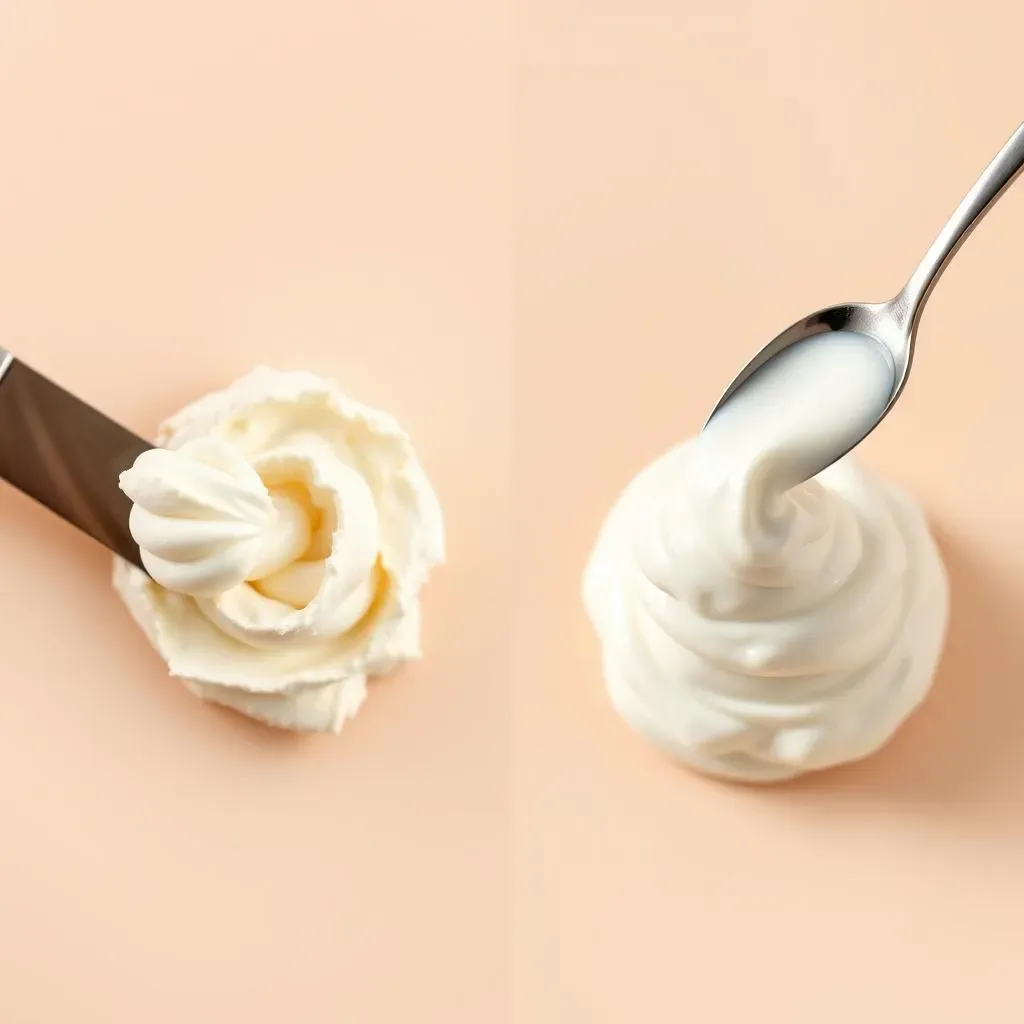Table of Contents
Have you ever stared into your fridge, recipe in hand, only to discover you're missing a key ingredient? Specifically, sour cream? That creamy, tangy delight that elevates so many dishes? It's a common kitchen dilemma, and one that often leads to the burning question: "Can you substitute cream cheese for sour cream?" The answer, as you'll soon discover, is a bit more nuanced than a simple yes or no. This article explores the fascinating world of cream cheese and sour cream, comparing their textures, tastes, and culinary applications. We'll dissect the differences that might make a substitution tricky and uncover the situations where a swap might actually work wonders. We'll even provide practical tips and recipe ideas to guide you through successful substitutions, helping you navigate those culinary emergencies with confidence. Get ready to unlock the secrets to mastering this common cooking conundrum and expanding your culinary creativity! Let's explore the possibilities of using cream cheese as a stand-in for sour cream, and discover whether this swap is a delicious success or a culinary catastrophe. Prepare to learn everything you need to know about substituting cream cheese for sour cream!
Can You Substitute Cream Cheese for Sour Cream? A Deep Dive

Can You Substitute Cream Cheese for Sour Cream? A Deep Dive
So, you're wondering if you can swap cream cheese for sour cream? It's a question that's popped up in countless kitchens, and honestly, the answer isn't a simple yes or no. It depends heavily on the recipe! Think of it like this: cream cheese and sour cream are cousins, not twins. They share some family resemblance—both are creamy dairy products—but their personalities are quite different. Sour cream boasts a bright, tangy flavor and a relatively thin consistency. Cream cheese, on the other hand, is richer, denser, and has a milder, almost subtly sweet taste. In some recipes, this difference is negligible; in others, it's a recipe for disaster. For instance, using cream cheese in a dip where sour cream provides the tangy base would result in a noticeably different, and likely less desirable, flavor profile.
Feature | Sour Cream | Cream Cheese |
|---|---|---|
Taste | Tangy, slightly acidic | Mild, slightly sweet |
Texture | Thin, pourable | Thick, spreadable |
Fat Content | Varies, generally lower than cream cheese | Higher fat content |
Let's consider a baking scenario. Imagine a cheesecake. Cream cheese is the star here; its richness and density are integral to the texture and flavor. Substituting sour cream would yield a thinner, less rich, and potentially tangier cake – probably not what you envisioned! Conversely, in a savory dish where sour cream is used primarily for its creaminess and slight tang, cream cheese might work, but you'd likely need to thin it out with a little milk or even lemon juice to mimic the consistency of sour cream. The key is understanding the role of the sour cream in your recipe.
- Consider the recipe's desired texture.
- Think about the overall flavor profile.
- Experiment cautiously – start with a small substitution.
“The best substitute is often no substitute at all,” says renowned chef, Jacques Pépin. While a clever swap can save the day, sometimes it's best to stick to the original recipe. But don’t despair! With a bit of culinary know-how, you can often achieve a delicious outcome even when faced with an ingredient shortage.
Cream Cheese vs. Sour Cream: Texture and Taste Differences

Cream Cheese vs. Sour Cream: Texture and Taste Differences
The Great Taste-Off: Sour Cream's Tang vs. Cream Cheese's Mildness
Let's talk flavor profiles. Sour cream hits you with a bright, tangy punch, thanks to the fermentation process that creates lactic acid. It's that delightful sourness that makes it perfect in dips, tacos, and as a topping for chili. Cream cheese, on the other hand, is much milder. It has a subtle sweetness and a creamy richness that's more akin to butter than to a fermented dairy product. Think of it as the creamy, mellow cousin of sour cream. The difference is significant enough that using cream cheese in a recipe that relies on sour cream's tang will result in a noticeably less acidic outcome.
- Sour Cream: Bright, tangy, slightly acidic
- Cream Cheese: Mild, creamy, subtly sweet
Texture Showdown: Spreadable vs. Pourable
Now let's discuss texture. Sour cream is thin and pourable—think of it as a liquid that's slightly thicker than milk. This makes it ideal for dressings, sauces, and as a dollop on top of baked potatoes. Cream cheese, however, is thick and spreadable—imagine a very soft butter. This dense texture is perfect for frostings, cheesecakes, and dips that require a rich, creamy base. Trying to use cream cheese in a recipe that needs a pourable consistency will be a messy and ultimately unsuccessful endeavor. Similarly, using sour cream where a thick texture is needed will likely result in a runny, disappointing final product.
Characteristic | Sour Cream | Cream Cheese |
|---|---|---|
Consistency | Thin, pourable | Thick, spreadable |
Application | Dressings, sauces, toppings | Frostings, fillings, dips |
Fat Content and Caloric Differences: A Nutritional Comparison
Finally, let's consider the nutritional aspects. While both are dairy products, their fat content differs significantly. Cream cheese typically has a much higher fat content than sour cream, which is often lower in fat and calories. This difference can impact the final product's texture and richness, as well as its overall caloric density. If you're watching your calorie intake, bear in mind that substituting cream cheese for sour cream will likely increase the fat and calorie count of your dish. This is something to consider when making substitutions, especially in larger quantities or in recipes where the fat content plays a crucial role in the overall flavor and texture.
"The kitchen is a place where you should experiment and create. Don't be afraid to try new things!" - Julia Child
Successful Substitutions: Recipes and Tips for Using Cream Cheese Instead of Sour Cream

Successful Substitutions: Recipes and Tips for Using Cream Cheese Instead of Sour Cream
When Cream Cheese Works Wonders: Savory Applications
Believe it or not, cream cheese can sometimes be a surprisingly good substitute for sour cream in savory dishes. The key is understanding the role sour cream plays. If it's primarily for creaminess and a hint of tang, cream cheese can often deliver. However, you'll need to adjust the consistency. Since cream cheese is much thicker, you'll need to thin it out. A splash of milk or even a squeeze of lemon juice can do the trick. This technique works particularly well in creamy sauces, soups, or dips where a strong tang isn't essential. For example, in a creamy tomato soup, adding thinned cream cheese can create a luxuriously smooth texture without drastically altering the flavor profile. Just remember to taste and adjust as needed! Don't be afraid to experiment; a little culinary creativity can go a long way.
Consider these examples: In a creamy chicken enchilada sauce, thinned cream cheese can add richness without overpowering the other flavors. Similarly, in a potato gratin, it can create a decadent, creamy layer. The key is to start small, adding the thinned cream cheese gradually and tasting as you go. Remember, the goal is to enhance, not overwhelm, the existing flavors.
Recipe | Adaptation Tip | Result |
|---|---|---|
Creamy Tomato Soup | Add 2-4 tablespoons of milk to 1/2 cup cream cheese; stir until smooth. | Smooth, creamy texture; slightly milder flavor. |
Chicken Enchilada Sauce | Thin cream cheese with chicken broth or milk; add gradually to sauce. | Rich, creamy sauce; slightly less tangy. |
Cream Cheese Fails: When to Avoid Substitution
While cream cheese can sometimes stand in for sour cream, there are situations where it's a recipe for disaster. Avoid using cream cheese in recipes where sour cream's tang is crucial. Think of dishes like tacos, where the sour cream provides a necessary counterpoint to the richness of the meat and other ingredients. Replacing it with cream cheese would result in a dish that's significantly less flavorful and balanced. Similarly, in dips that rely on sour cream's tang, cream cheese simply won't deliver the same kick. Remember, cream cheese is milder and richer; it's not a direct flavor or texture substitute for sour cream in every instance. Sticking to the original recipe is always the safest bet in these cases.
Let’s be honest, sometimes a substitution just doesn't work. The resulting dish might have a strange texture or flavor profile. It's better to acknowledge those limitations and either adjust the recipe or simply stick to the original ingredients. There's no shame in admitting that some culinary experiments just don't pan out. Learning when to avoid a substitution is just as important as knowing when it might work.
- Avoid substituting in recipes where sour cream's tang is key (e.g., tacos, dips).
- Consider the texture: cream cheese's thickness might not be suitable for all dishes.
- If unsure, stick to the original recipe for best results.